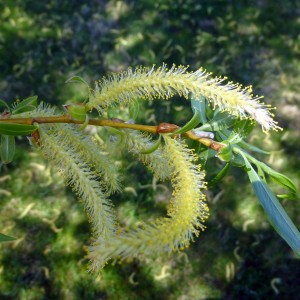Hello fellow readers,
Craig of Frelinghuysen admits he has a “love-hate relationship with his willows gone wild.” He and Caroline have three Weeping Willows next to their pool, an ‘ongoing issue’ between them. Caroline, like me, hates to kill trees. ‘They’re the most beautiful trees on the property, but cause countless hours of cleanup,’ explains Craig.
Two trees were planted when they moved into the home along their border for privacy in a dry part of the yard where grass didn’t grow. They then added another near the backwash after they installed their pool. It seems Mr. Willow loves chlorine, as he quickly catches up with the others. In truth, willows thrive in water and have invasive roots that seek water if deprived.
Craig’s willow dilemma begins in early spring when the buds pop and “shells fall all over the place.” Every two years, he re-seals his patio, and the timing must be perfect; with no wind, otherwise, the shells will be entombed in the sealer.
“Next come the wormy furry things that clog the filter,” describes Craig. Those are their long pussy willow-like flowers called catkins.
From the time the trees leaf out, he removes “bags and bags of debris,” including sticks. They’re soft-wooded, so typically, they don’t cause problems if mowed over. That is, until Craig ran over a thick branch that wedged into the drive pulley of his tractor, causing a raucous vibration as if the tractor was falling apart.
Then there are the blackbirds that nest in the trees. “Several Moms fly back and forth feeding their insatiable young, leaving strafe marks.”
Strafe marks, I ask?
“Long paths of bird doo-doo on the patio the full month of May,” rants Craig. At this point, I am on the floor with laughter.
His comedy occurred during an infestation of gypsy moths (now called spongy moths). Craig thought the town treated them by selectively spraying sticky goop in the trees.
“Then a massive army of ants took up residence under his trees, feeding on the stuff.”
That’s amazing, I commented, as typically, oaks are devastatingly affected. Craig checked with the town and learned they didn’t spray.
“Our trees have the dreaded giant willow aphid that produces a substance called honeydew, which explains the huge clusters of ants I now have. Yuck!”
What to do? Willows Gone Wild Part 2.
Garden Dilemmas? AskMaryStone@gmail.com and your favorite Podcast App.
Column Updated 9/27/25



